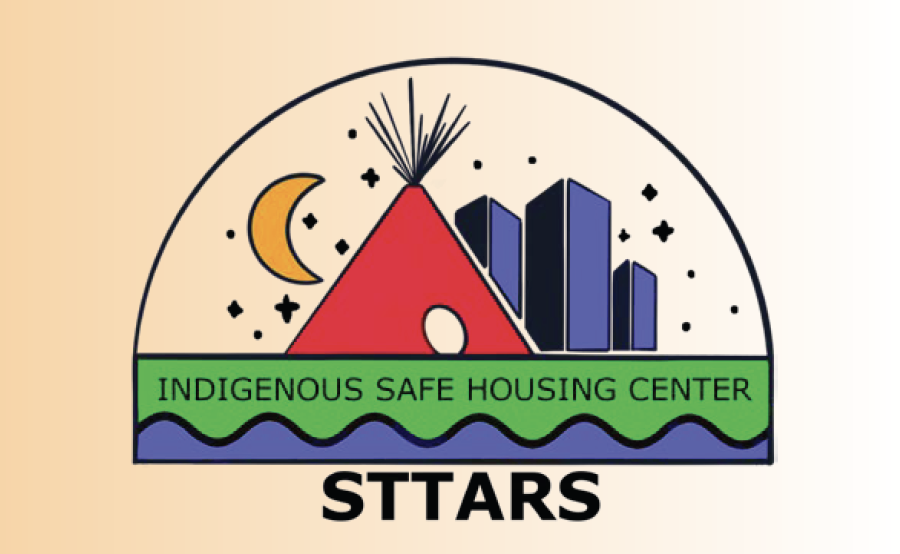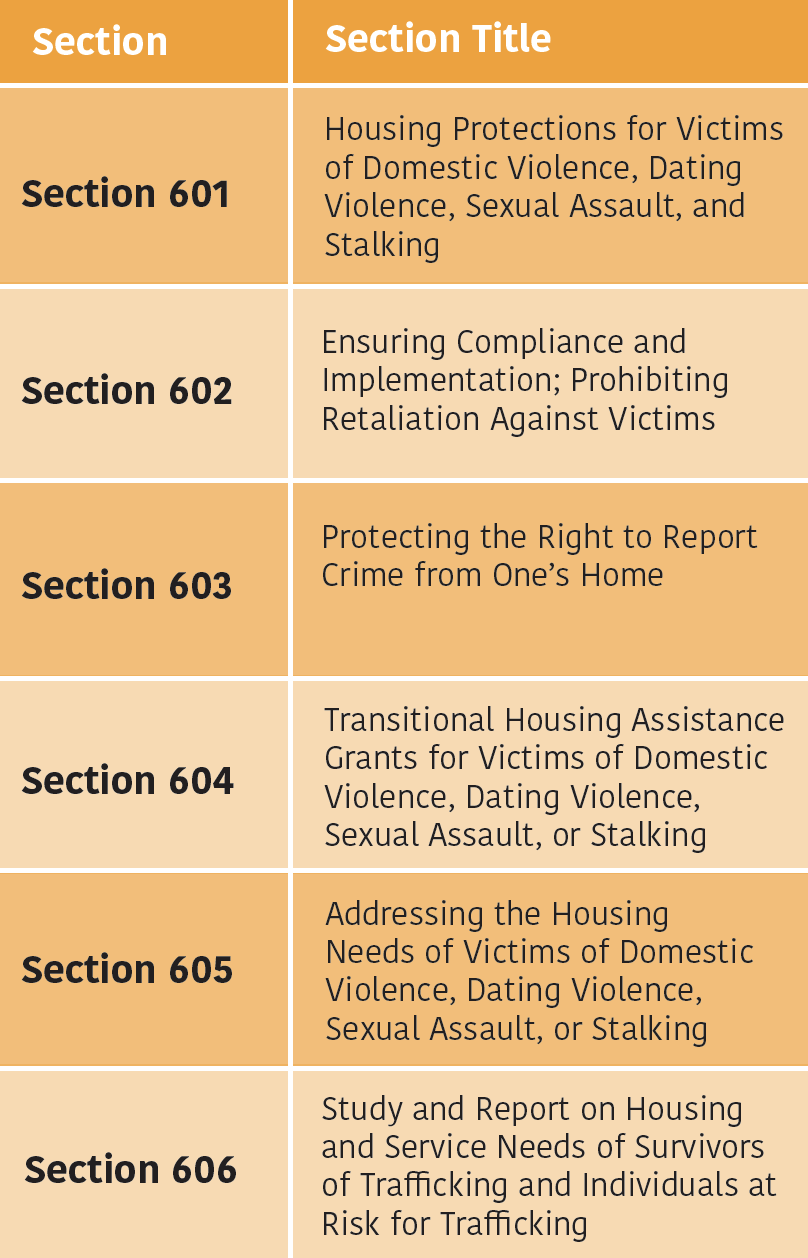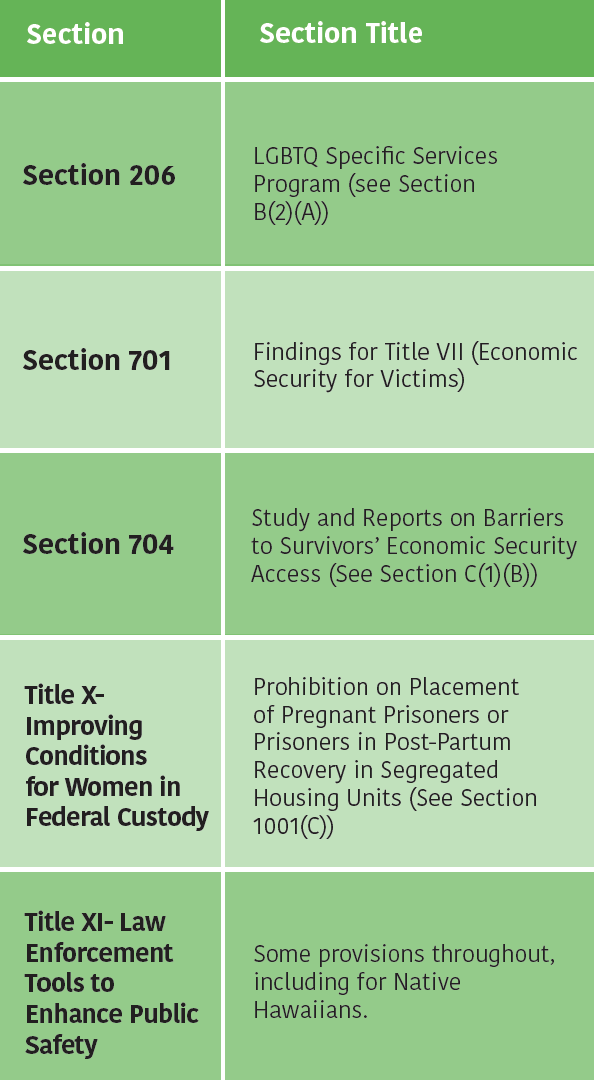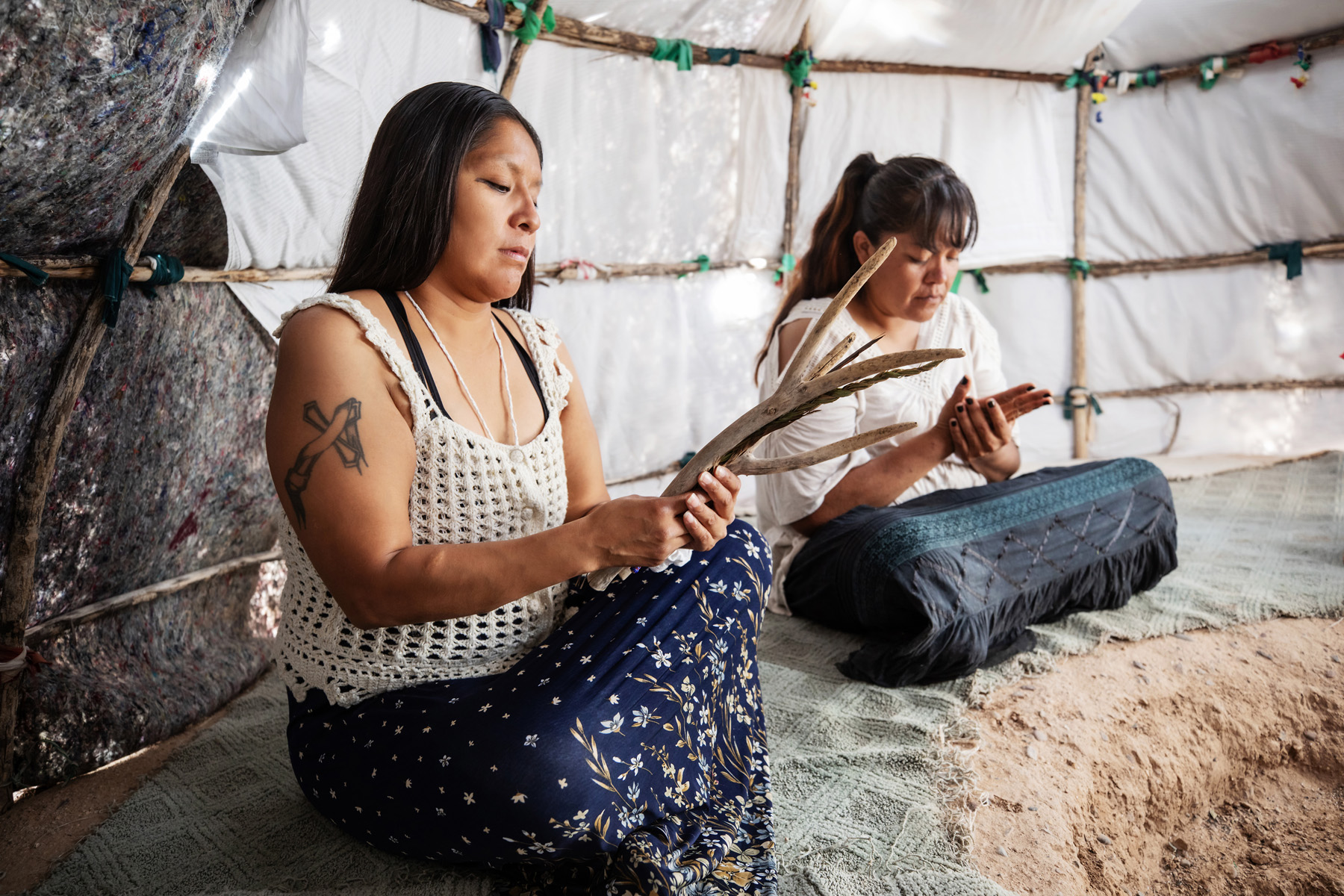Legislative Update VAWA 2022 Housing Provisions
Where can I find an analysis on the Violence Against Women Act (VAWA) 2013/2005 related to housing security/access to safe shelter for American Indian, Alaska Native, and Indigenous peoples within the U.S.?
 This article is intended to be a brief legislative update that
This article is intended to be a brief legislative update that evolves as we delve more into the text of the full Violence Against Women Act. However, the National Indigenous Women’s Resource Center published an article in the June 2018 Restoration Magazine regarding VAWA housing provisions, which can be accessed here: https://n8ve.net/kuNaw
evolves as we delve more into the text of the full Violence Against Women Act. However, the National Indigenous Women’s Resource Center published an article in the June 2018 Restoration Magazine regarding VAWA housing provisions, which can be accessed here: https://n8ve.net/kuNaw
We also encourage you to read the housing report, National Workgroup on Safe Housing for American Indian and Alaska Native (AI/AN) Survivors of Gender- Based Violence: Lessons Learned, which can be accessed here: https://n8ve.net/RpedO
Were any new housing or shelter-related provisions added to VAWA 2022?
Yes. The STTARS Indigenous Safe Housing Center (STTARS) is still reviewing VAWA 2022 and working with partners to better understand the changes to housing provisions in the latest iteration. However, we have included our initial review below:
Provisions of note so far are the following:
- Compliance reviews which should improve overall implementation and compliance
- Funding for training and technical assistance
- Amending the McKinney-Vento Homeless Assistance Act’s definition of “homelessness”
- The right to report crime without risking one’s housing/anti-retaliation provisions
- Reauthorizing and improving the VAWA transitional housing program
- A study on victims of trafficking
- Time limits on when HUD and other federal agencies must promulgate VAWA regulations
- Codifying the VAWA Housing Director Position
STTARS wants to highlight that amending the McKinney-Vento Homeless Assistance Act definition of “homelessness” was included in the 2020 report recommendations by the National Workgroup on Safe Housing for AI/AN Survivors of Gender-Based Violence.
Section 602
Section 602 now defines standards of compliance under covered housing programs; includes detailed reporting requirements, including the number of emergency transfers requested and granted, as well as the length of time needed to process them; includes standards for corrective action plans where compliance standards have not been met; requires some form of consultation (not Tribal specific); establishes a gender-based violence office with a violence against women director (and establishes their duties); and requires each appropriate agencies to issue regulations in accordance with section 553 of Title 5 in of the U.S.C. no later than two years after VAWA 2022 is enacted.
Rather importantly, Section 602 states that no public housing agency or owner or manager of housing assisted under a covered housing program shall discriminate against any person because that person has opposed any act or practice made unlawful by the act. It also prohibits coercion, intimidation, threats, interference, or retaliation against any person in the exercise/enjoyment of, on account of the person having exercised/enjoyed, or on account of the person having aided or encouraged any other person in the exercise/enjoyment of any rights or protections under the Act.
Section 605
Section 605 amends the HEARTH Act so that the definition of “homeless” means: any individual or family who is experiencing trauma or a lack of safety related to, or fleeing or attempting to flee, domestic violence, dating violence, sexual assault, stalking, or other dangerous traumatic or life-threatening conditions related to the violence against the individual or a family member in the individual’s or family’s current housing situation, including where the health and safety of children are jeopardized. However, the definition also includes the following limiting language: has no other safe residence and lacks resources to obtain other safe permanent housing.
The STTARS team alongside its National Workgroup on Safe Housing for AI/AN Survivors of Gender-Based Violence is working to address the limiting language and hopes to advise policymakers regarding ways to implement that new language while centering the intersectional needs of survivors.
Section 606
This section outlines the scope of a new study on trafficking and housing insecurity/homelessness. Section 606 defines “severe form of trafficking” to be the same as that found in section 103 of the TVPA (2000). This section applies to survivors of trafficking, including severe forms of trafficking, and those at risk of being trafficked. This section requires the government to coordinate with the “Interagency Task Force to Monitor and Combat Trafficking established under Section105 of the TVPA (2000), the US Advisory Council on Human Trafficking, and the Secretary of HHS.
What additional provisions should I know about?


STTARS wants to call attention specifically to §701. Just as the findings in Title IX are critically important to the Safety for Indian Women chapter in the VAWA, these findings are significant and useful in terms of addressing the financial impact of violence on survivors generally (not Tribal specific). In particular, these findings called attention to the following:
- 60% of single women lack economic security and 81 percent of households with single mothers live in economic insecurity. Significant barriers that survivors confront include access to housing, transportation, and childcare. (§701(4))
- 92% of homeless women have experienced domestic violence, and more than 50% of such women cite domestic violence as the direct cause of homelessness. Survivors are deprived of their autonomy, liberty, and security, and face tremendous threats to their health and safety. Id.
- The CDC reports that survivors of severe intimate partner violence lose nearly 8,000,000 days of paid work. Women disproportionately need time off to care for their health or to find safety solutions, such as obtaining a restraining order or finding housing, to avoid or prevent further violence. (§701(5)).
The findings also define economic abuse as “behaviors that control an intimate partner’s ability to acquire, use, and maintain access to money, credit, ownership of assets, or governmental or private financial benefits, including defaulting on joint obligations (such as school loans, credit card debt, mortgages, or rent). Other forms of such abuse may include preventing someone from attending school, threatening to or actually terminating employment, controlling or withholding access to cash, checking, or credit accounts, and attempting to damage or sabotage the creditworthiness of an intimate partner, including forcing an intimate partner to write bad checks, forcing an intimate partner to default on payments related to household needs, such as housing, or forcing an intimate partner into bankruptcy.” (§701(15).
LEARN MORE
View National Workgroup on Safe Housing for American Indian and Alaska Native Survivors of Gender-Based Violence: Lessons Learned: n8ve.net/RpedO





